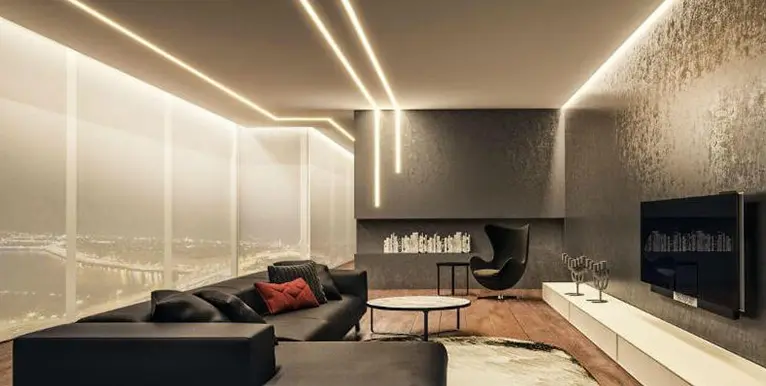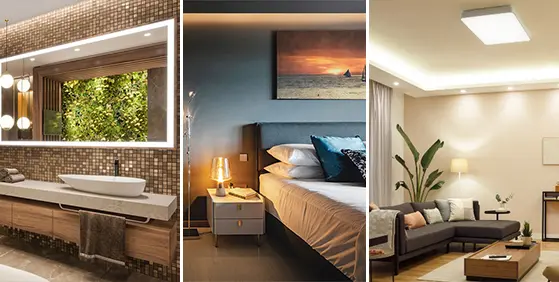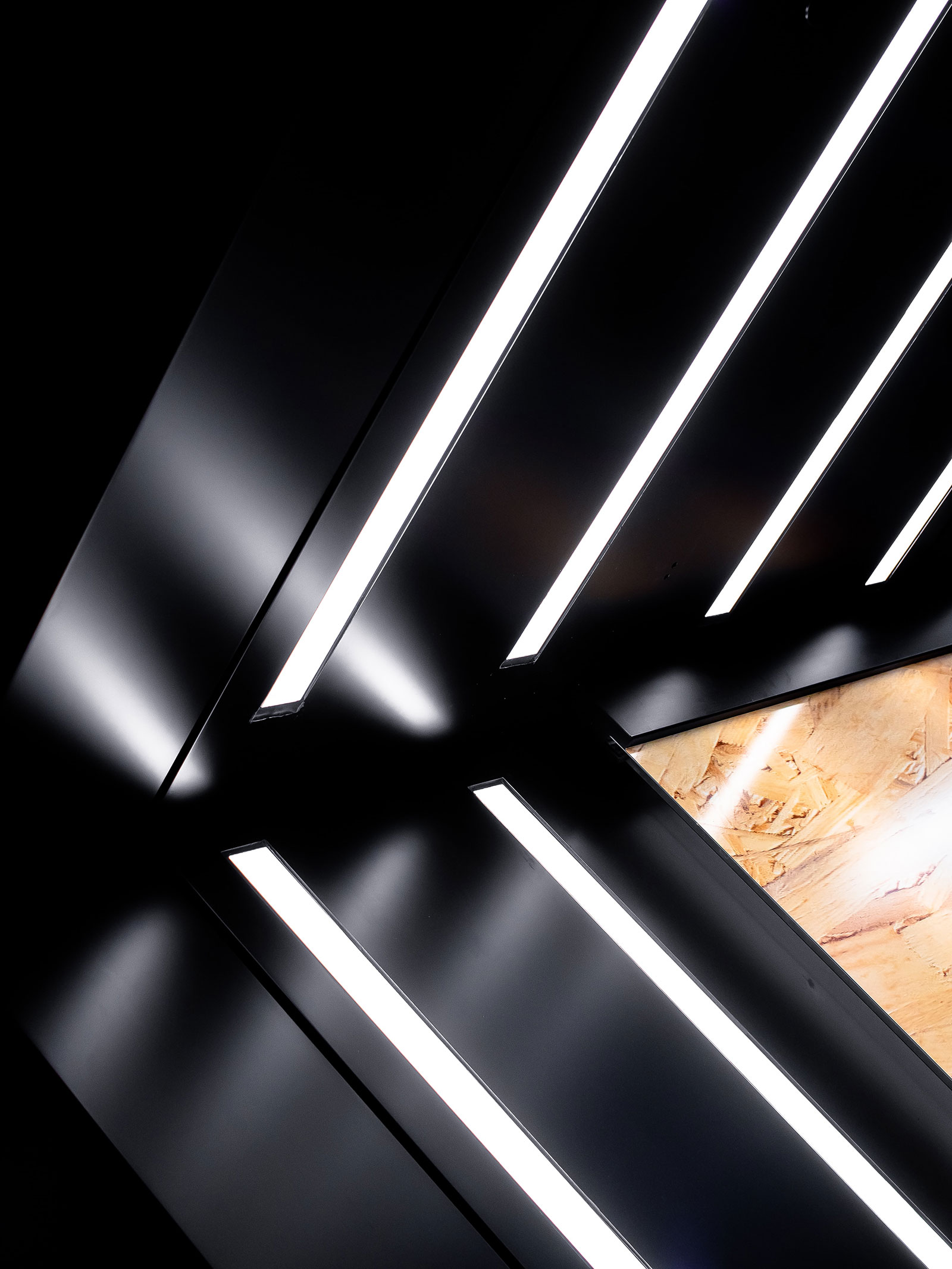When it comes to outdoor lighting design, safety should always come first. LED exterior lighting provides an efficient and cost-effective way to light pathways, courtyards, and other public spaces, while also ensuring optimum levels of safety and security. In this blog post, we’ll explore best practices for exterior lighting design, discussing the optimal lighting levels, different techniques such as pathway and security lighting, and the benefits of using LED exterior lighting.
Importance of Safety in Exterior LED Lighting Design
Properly lit outdoor spaces not only enhance the aesthetic appeal but also ensure the safety and security of those using them.
Exterior lighting safety helps to prevent accidents and injuries by illuminating potential hazards such as uneven surfaces or steps. Adequate lighting also deters criminals and reduces the risk of vandalism or theft, creating a more secure environment for everyone.
Well-designed exterior lighting can enhance visibility and help pedestrians navigate their way around public spaces. Whether it’s a pathway or a courtyard, proper lighting ensures that individuals can see where they are going, minimising the risk of slips, trips, or falls.
It’s important to consider the surrounding environment when designing exterior lighting systems. This includes taking into account factors such as weather conditions, terrain, and the specific needs of the space. By tailoring the lighting design to the unique characteristics of the area, you can maximise safety and ensure optimal visibility.
Optimal Lighting Levels for Outdoor Spaces
Exterior lighting safety should be a top priority when determining the lighting levels for outdoor spaces. The level of lighting needed will depend on the specific area and its intended use. For example, a pathway may require higher levels of lighting to ensure clear visibility, whilst a courtyard or garden area may benefit from a softer, more ambient lighting scheme.
It is important to strike a balance between providing enough light for visibility and avoiding glare. Glare can be distracting and can even obscure visibility, creating potential hazards. Utilising fixtures that direct light downwards or using diffusing lenses can help minimise glare and create a more comfortable lighting environment.
Another important consideration when determining optimal lighting levels is the surrounding environment. Factors such as surrounding buildings, trees, and landscape features can impact the overall lighting levels required. By considering these factors and tailoring the lighting design to the specific space, you can ensure that safety is prioritised and the outdoor space is well-illuminated for all to enjoy.
Techniques for Pathway Lighting
Pathway lighting is an essential aspect of exterior lighting design, providing guidance and safety for pedestrians navigating outdoor spaces. When it comes to illuminating pathways, there are a few key techniques to consider.
It’s important to ensure that the lighting is evenly distributed along the pathway. This can be achieved by using a combination of downlights, bollard lights, or recessed lights placed at regular intervals. By spacing the lights appropriately, you can ensure that the entire pathway is well-lit, minimising any dark spots or shadows that may pose a risk.
In addition to even distribution, it’s also important to consider the height and angle of the lights. Pathway lights should be positioned at a height that allows for optimal visibility without causing glare. This can be achieved by installing lights at a lower height or using shielded fixtures that direct the light downward.
Another technique is using motion sensors or timers for pathway lighting. By incorporating these features, you can save energy and enhance safety by ensuring that the pathway is only illuminated when it is in use. This can be particularly beneficial for pathways that are used infrequently or during specific times of the day.
Pathway lighting plays a crucial role in ensuring the safety and usability of outdoor spaces. By employing these techniques and considering the unique characteristics of the area, you can create a well-lit pathway that promotes safety and enhances the overall experience for pedestrians.
Strategies for Security Lighting
There are several strategies to consider when it comes to security lighting. Firstly, it’s important to identify the areas that require heightened security. This could include entrances, car parks, or secluded areas that may be more prone to vandalism or theft. By focusing on these areas, you can ensure that they are well-illuminated and any potential threats are easily visible.
Another strategy to consider is the use of motion sensor lights. These lights automatically turn on when they detect movement, alerting anyone in the area to potential intruders. Motion sensor lights are a cost-effective and efficient way to enhance security without the need for constant lighting.
In addition to motion sensor lights, incorporating timers into your security lighting system can also be beneficial. Timers allow you to programme the lights to turn on and off at specific times, creating the illusion of occupancy even when the space is unoccupied. This can be particularly effective in deterring potential burglars.
Lastly, it’s important to ensure that your security lighting is well-positioned and does not create any blind spots. Adequate coverage is essential for deterring criminal activity and creating a safe environment. Consider using a combination of floodlights, spotlights, and downlights to effectively illuminate the area.
By implementing these strategies for security lighting, you can enhance the safety and security of your outdoor spaces and provide peace of mind for all. Remember, exterior lighting safety should always be a top priority when designing any lighting system.
Choosing the Right Fixtures for Your Outdoor Space
Choosing the right fixtures for your outdoor space is essential for creating a well-designed and safe lighting system. With so many options available, it’s important to consider a few key factors when selecting your fixtures.
Are you lighting a pathway, a courtyard, or a garden area? Each space will have different lighting needs and requirements. For example, a pathway may benefit from the use of bollard lights or recessed lights placed at regular intervals to provide even distribution and clear visibility. On the other hand, a courtyard or garden area may benefit from the use of decorative fixtures such as lanterns or fairy lights to create a warm and inviting atmosphere.
Choose fixtures that complement the overall design and architecture of the area. There are a wide variety of fixture styles available, from modern and sleek to traditional and ornate. Selecting fixtures that align with the style of the space will ensure a cohesive and visually pleasing lighting design
Outdoor lighting fixtures need to be able to withstand the elements, including rain, wind, and UV exposure. Look for fixtures that are specifically designed for outdoor use and are made from materials that are resistant to corrosion and fading.
By considering the purpose, style, and durability of the fixtures, you can choose the right lighting options for your outdoor space. This will not only enhance the safety and functionality of the area but also create a visually appealing and inviting environment for all to enjoy.
Work With Smart Light Industries To Find the Right Outdoor LED Lighting Supplies
If you are looking to add some LED lighting to your home or business’s exterior, consider working with Smart Light Industries. Our array of outdoor LED lights, fixtures, and controls will help you find the right setup for your needs.










